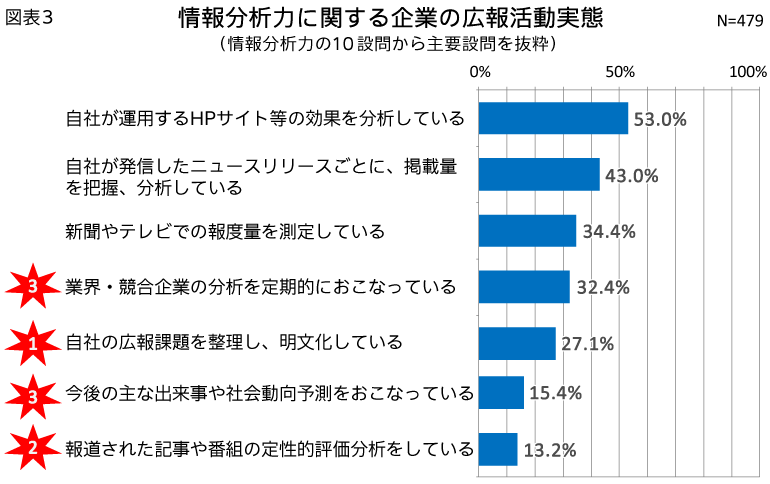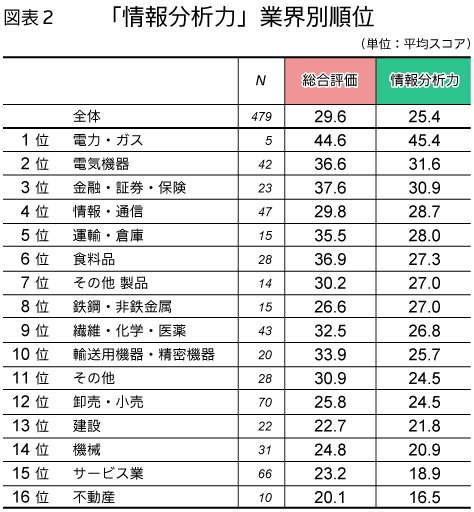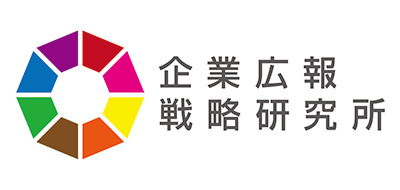This is the sixth installment of the series on the " First Survey on Corporate Public Relations Activities" conducted by the Corporate Public Relations Strategy Research Institute, targeting 479 listed Japanese companies. This installment explains the second element of the "Public Relations Octopus Model Analysis" – which breaks down corporate PR activities into "Eight PR Capabilities" (see Figure 1) – focusing on "Information Analysis Capability."
Among the "Eight Public Relations Capabilities," "Information Analysis Capability" is one of the four categories in the preparation phase (Information Gathering, Information Analysis, Strategy Development, Information Creation). It can be said to handle the phase of "perceiving and judging" information.
If we liken a company to a person, information gathering is the mechanism for grasping the surrounding situation through sensory organs (antennas) like eyes, ears, smell, and touch. Information analysis capability, then, is the ability to perceive that information in the brain and make judgments as needed. It is also the capability that tests "PR sense" (equivalent to communication sense) – the ability to judge whether the surrounding situation is dangerous or not for oneself (the company), and whether one should speak up now or remain silent.
Among the 479 listed companies surveyed, the "information analysis capability" of the top-ranked "Electric Power & Gas" industry scored 45.4 points, exceeding the overall average of 25.4 points by 20.0 points and significantly outpacing the second-ranked "Electrical Equipment" industry's score of 31.6 points (Figure 2). This strong performance in the "Electricity & Gas" sector is likely attributable to the need for multifaceted indicators to assess situations, given the presence of diverse stakeholders.
The "Information Analysis Capability" section of the PR Capability Survey comprised 10 questions. The top three practices reported by companies were: "Effectiveness analysis of company websites" (53.0%), "Tracking coverage volume per press release" (43.0%), and "Measuring coverage volume in newspapers and TV" (34.4%) (Figure 3). With an average score of 25.4% across the 10 questions, "Information Analysis Capability" scored lower overall than "Information Gathering Capability" (37.0%). This indicates that corporate PR departments are not actively engaging in information analysis.

*Percentage of 479 responding listed companies that indicated they possess information analysis capabilities. Asterisks indicate the top three items prioritized by the expert panel (numbers indicate ranking).
All three of these top items are quantitative PR effectiveness measurement metrics. The ability to properly execute these significantly influences a company's "information analysis capability" score. Conversely, the two items highlighted as important by the PR expert panel (researchers, media, PR practitioners)—"qualitative evaluation analysis of reported articles and programs" and "forecasting major upcoming events and social trends"—involve qualitative analysis. This fundamentally differs from the top three items, which quantitatively analyze past coverage.
To conduct PR strategically, quantitative analysis is important, but it is equally vital to view it alongside qualitative information such as social trend forecasting and media interests. This dual approach helps determine whether a company's PR activities are aligned with societal needs.
Furthermore, regarding the item deemed most important by the expert panel—"Organizing and Documenting the Company's PR Challenges"—putting challenges into writing clarifies them. Sharing them in text form further enhances internal communication capabilities. The key point is to "list them in plain language using bullet points." This minimizes differing interpretations among stakeholders and promotes shared understanding. Another key point is to be mindful of "considering the stage of the challenge." Treating challenges at different stages—from management philosophy to management strategy to PR strategy to PR tactics—as identical can easily lead to confusion.
The Corporate Public Relations Strategy Institute defines "information analysis capability" as "the ability to gain insights into the company's management and PR challenges based on collected information, and the capacity to share these insights systematically within the organization." In other words, merely collecting information is insufficient; it must be followed by insight and sharing to connect to the next stage of strategy development. This is precisely where "PR acumen" comes into play.
About the Corporate Communication Strategic Studies Institute
The Corporate Communication Strategic Studies Institute (CSI) is a research organization within Dentsu Inc. Public Relations. It collaborates with experts in corporate management and public relations (including university professors and researchers) to conduct surveys, analyses, and research on corporate public relations strategies and organizational frameworks.





